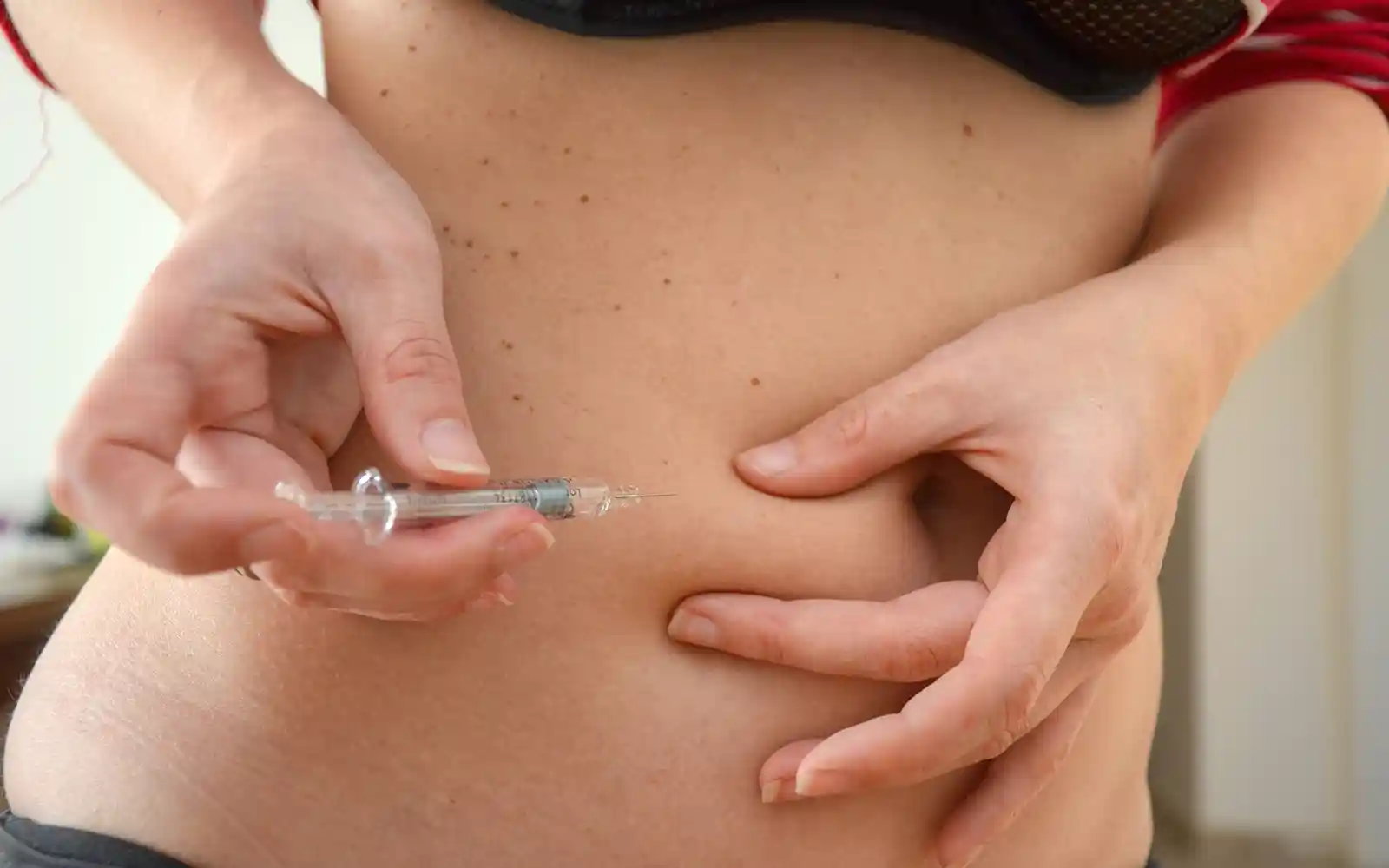Medical treatments for PCOS usually revolve around the combined oral contraceptive pill for women who aren’t trying to conceive, as they manage sex hormone levels and induce regular periods. They make pregnancy highly unlikely but reduce excess hair growth. When women want to get pregnant, and they’d like to take a medicated route, we advise they see a reproductive endocrinologist. However, the medical treatment options are:
First-line treatment options
Clomiphene citrate
Clomiphene citrate (CC or Clomid) is an anti-oestrogen drug and the first-line treatment for most women with PCOS, and it stimulates ovulation by increasing LH and FSH levels at the start of the cycle.
Because more eggs reach maturity and ovulate with CC, the increased risk of ovarian hyperstimulation syndrome (OHSS) makes monitoring essential. There are complications as the high LH significantly increases the chance of implantation failure and miscarriage. CC also significantly increases the rates of LUFS by disrupting normal follicular development. Despite this, CC is generally considered a safe treatment with conception rates of about 20% a cycle.
We believe it’s most suitable for young (or overweight) women because CC reduces fertile mucus and increases problems of thin endometrial linings. These issues affect older women most often, and our advice with respect to CC and PFPs is:
| PFPs | Considerations |
|---|---|
| Hot | Avoid |
| Cold | Take |
| Energy | Consider your options |
| Fluids | Take |
| Blood | Fertile mucus & depth of endometrium may be issues |
| Flow | Consider your options |
Side effects include blurred vision, breakthrough bleeding, hot flushes, mood swings, breast tenderness, nausea and pelvic discomfort.
Alternatives: there are viable herbal alternatives that avoid the issues of reduced fertile mucus, thinning of the womb lining and miscarriage.
Letrozole
Letrozole (L)is an aromatase inhibitor that blocks the conversion of oestrogens to androgens and causes a surge in FSH that drives follicular growth in a more normal way than CC. Multiple studies indicate L is superior to CC in terms of pregnancy and live birth rates and may have less risk of OHSS or multiple pregnancy. However, recorded pregnancy loss is high with both drugs: 19% (L) and 20% (CC).
L is licensed for use in postmenopausal women and should not be taken if pregnant.
Side effects: It’s off-label in many regions due to concerns of babies being born with congenital abnormalities (cardiac and movement function), with a stated risk of less than 5%.
Metformin
Metformin (M)is an insulin sensitising agent commonly prescribed for people with diabetes that:
- Inhibits glucose production in the liver
- Decreases glucose uptake in the guts
- Increases insulin sensitivity in muscles
M raises ovulation rates in women with raised insulin by reducing high insulin levels on ovarian function. Long-term use improves menstrual cycles in about half of the women and increases pregnancy and birth rates.
While M has similar ovulation, pregnancy and birth rates to CC generally, it’s less effective than CC for obese women, while the combination of M and CC increases both ovulation and pregnancy rates.
Side effects include diarrhoea, abdominal discomfort, cough, shallow breathing, fever or chills, sleepiness, anxiety, depression, dizziness, headache.
Alternatives: several well-researched nutritional options are available that avoid M side effects and are clinically as effective.
Second-line treatment options
Gonadotropins
Gonadotropins are hormones that directly affect how ovaries function and follicle-stimulating hormone (FSH) is the usual choice when:
- First-line oral options are unsuccessful due to resistance to anti-oestrogens
- If CC thins the womb lining to the point that implantation is unrealistic
Various forms of FSH are available, but they’re expensive and only available with specialist support.
Their clinical use is challenging as responses are unpredictable. Hence, monitoring is essential, and a cancellation policy occurs when three 14mm follicles develop to prevent OHSS. A low dose “step-up” regime is considered best practice to avoid multiple pregnancies and maintain safety.
There is debate on whether low dose FSH is a viable first-line option to CC, and some authors suggest M alongside FSH increases ovulation, pregnancy, and live birth rates.
Side effects include a significant risk of OHSS and multiple pregnancies, bloating, breathlessness, anxiety, confusion, headache, pelvic pain, nausea, and vaginal bleeding.
Ovarian drilling
Laparoscopic ovarian drilling (LOD) involves surgery to rupture multiple large follicles in ovaries. It’s a successful alternative to FSH for women resistant to antioestrogens (CC), and there are various advantages and disadvantages:
| Advantages | Disadvantages |
|---|---|
| Repeated one egg cycles follow surgery | Requires a general anaesthetic |
| Avoids thinning of the womb lining (CC) | Risk of post-op adhesions |
| Avoids reduction of fertile mucus (CC) | Risk of earlier premature ovarian failure |
| Raises pregnancy and birth rates | Risk of complications from the operation, especially for obese and overweight women |
| Normalises LH and androgens | |
| Significantly lower miscarriage rates (CC & L) |
Research reports widely varying pregnancy rates, but overall, they’re probably similar to FSH but with less risk of multiple pregnancy or OHSS. The surgery is subtle and only experienced laparoscopic surgeons should perform it.
Third-line treatment options
IVF
Although in-vitro-fertilization (IVF) is a very effective treatment option, it involves significant challenges for women with PCOS:
- High risk of OHSS
- Increased risk of multiple births
- Accelerated maturation of the womb lining
- High costs
- Variable access to treatment
If IVF is chosen, a GnRH agonist protocol (rather than the long agonist protocol) significantly reduces the risk of OHSS. Additionally, using metformin alongside IVF reduces the risk of OHSS, making it safer for women with PCOS to have IVF, as does the decision to freeze all eggs from a stimulation cycle and use them selectively later.
IVM
In-vitro-maturation involves retrieving immature eggs from unstimulated (or low stimulated) ovaries. Reports of pregnancy rates vary markedly, and low egg quality and implantation issues may play a part, and IVM is a specialist treatment that’s only offered by specialist centres.


